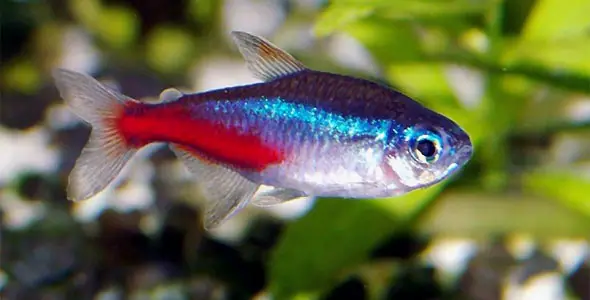Resembling Tetras and related to Danios, Rasboras bring bright, exotic coloring to the freshwater aquarium. Rasboras are bright and colorful, active and animated, peaceful and easy to care for. They are schooling fish and successful tanks have a minimum of three Rasboras while the best tanks have close to ten. Voracious eaters, Rasboras require constant feeding but reward you with exquisite color and markings.
Sub-Species for Aquariums:
Harlequin/ Red – The most common Rasbora, the Harlequin Rasbora, is named for its bright red body and “harlequin” shaped spot on its body. Its belly is silver and its fins are rimmed in gold.
Red-Lined – This Rasbora is light-gold colored in body, but sports a deep salmon pink line that crosses horizontally from the nose to the base of the tail.
Pygmy – The Pygmy Rasbora is a bright peach color with randomly placed black spots. These spots can be found on the fins, body or tail.
Scissortail – Scissortail Rasboras have a mercury colored body with a black and silver streak running down the side. They receive their name from the black and white markings on their tails.
Two-Spot – The Two-spot Rasbora is a silver bodied fish with two spots and only two spots. On all fish they are located in the same places: at the base of the tail and the base of the pectoral fins.
Care:
The most important component for caring for Rasboras is providing them with other Rasboras to school with. Begin with three and once they are acclimated, add a second group of three or four. They are happiest in groups of five or more. Some owners eventually decide they love Rasboras and add even more to their tank, keeping only a large Rasboras school. These fish do best with water around 74˚F and a pH of 6.5. Consider purchasing a short but long tank for them to roam in.
Diet:
Rasboras are insectivores and while they will survive on flake food, an excellent treat is mosquito larvae or fruit flies. Do not feed your Rasboras a lot of food at once. They do not have a large appetite and the uneaten food will sink to the bottom of the tank and decay.
Size: Up to 6 Inches
Freshwater/ Saltwater: Freshwater
Diet: Insectivore
Reef Compatibility: NA
Tank Mate Compatibility: 8
Lifespan: Up to 5 Years





